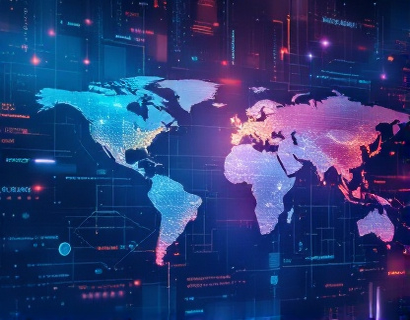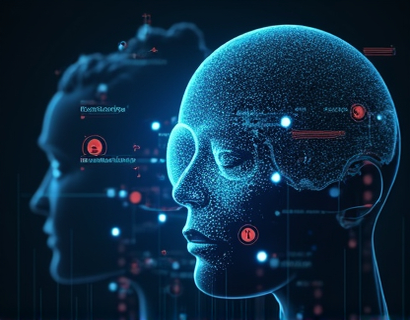AI-Driven Insights: Specialized Knowledge on Sustainable Fishing Industry
The sustainable fishing industry plays a crucial role in maintaining the health of our oceans and ensuring the availability of seafood for future generations. With the increasing demand for seafood and the growing concerns about overfishing and environmental degradation, it is essential to leverage advanced technologies like AI to provide specialized knowledge and insights for educators, students, and professionals. This article explores how an AI-powered chat platform can offer verified insights into the sustainable fishing industry, tailored for various audiences, including a child-friendly version for educational use.
Understanding Sustainable Fishing
Sustainable fishing refers to practices that ensure the long-term health of fish populations and marine ecosystems. This involves adhering to strict guidelines and regulations to prevent overfishing, protect habitats, and minimize bycatch. The goal is to balance the needs of the fishing industry with the ecological integrity of the oceans. AI can play a pivotal role in promoting sustainable fishing by providing real-time data, predictive analytics, and expert insights to stakeholders across the supply chain.
Role of AI in Sustainable Fishing
AI technologies, particularly machine learning and natural language processing, can process vast amounts of data from various sources such as satellite imagery, sensor networks, and historical records. This capability enables the generation of actionable insights that can inform decision-making in the fishing industry. For instance, AI can help in monitoring fish stocks, predicting population trends, and identifying areas where fishing activities need to be restricted or regulated.
Verified Insights for Educators and Students
Educators and students can benefit greatly from AI-driven platforms that provide verified and accurate information on sustainable fishing practices. These platforms can offer a wealth of resources, including articles, videos, and interactive modules, all backed by scientific research and expert opinions. For educators, this means access to up-to-date materials that can be integrated into curricula, enhancing the educational experience and fostering a deeper understanding of marine conservation.
For students, especially those in environmental science, marine biology, and related fields, these platforms serve as valuable learning tools. They can engage with content that is both informative and engaging, helping to build a knowledgeable and passionate generation of future leaders in sustainability.
Child-Friendly Version for Safe and Educational Use
Recognizing the importance of early education in sustainability, a child-friendly version of the AI chat platform is essential. This version simplifies complex concepts into age-appropriate language, using visuals and interactive elements to make learning fun and accessible. The platform ensures a secure environment, with strict privacy controls and content moderation to protect young users.
Topics covered in the child-friendly version might include the life cycle of fish, the importance of coral reefs, and simple actions children can take to help protect the oceans. By introducing these concepts at a young age, we can cultivate a sense of responsibility and stewardship for the environment.
Insights on Specific Fish Species: The Case of Swordfish
One species that highlights the complexities of sustainable fishing is the swordfish. Known for its swift movements and large size, swordfish is a popular choice in many cuisines worldwide. However, its popularity has led to significant fishing pressures, making it a critical case study for sustainable practices.
AI can provide detailed insights into swordfish populations, migration patterns, and breeding habits. By analyzing data from various sources, AI can help identify overfished areas and suggest sustainable quotas. This information is vital for policymakers and fishing industries to implement effective management strategies.
For educators and students, understanding the specific challenges faced by swordfish can serve as a practical example of sustainable fishing issues. Interactive modules can simulate the impact of different fishing practices on swordfish populations, helping learners grasp the importance of balance and conservation.
Industry Insights and Best Practices
The fishing industry, like any other, benefits from continuous innovation and best practices. AI-driven platforms can offer insights into the latest technologies and methodologies that promote sustainability. For example, the use of selective fishing gear can reduce bycatch, while real-time monitoring systems can ensure compliance with fishing regulations.
Professionals in the industry can access case studies and success stories through the AI platform, learning from the experiences of others. This knowledge exchange fosters a collaborative approach to sustainability, encouraging the adoption of best practices across the board.
Engagement Through AI Chat Interface
The AI chat interface is a powerful tool for engaging with users of all ages. It provides a conversational platform where users can ask questions, seek clarifications, and receive immediate responses based on verified data. This interactivity enhances the learning experience, making it more dynamic and personalized.
For educators, the chat interface can be used to facilitate discussions and answer student queries in real-time. Students can explore topics in depth, receiving tailored explanations and additional resources as needed. The chat can also be integrated into online courses and educational programs, providing a seamless and enriching experience.
Ensuring Content Verification and Accuracy
One of the key advantages of using an AI-driven platform is the emphasis on content verification. All information provided is cross-referenced with credible sources, ensuring accuracy and reliability. This is particularly important in a field as critical as sustainable fishing, where misinformation can have significant consequences.
The platform employs a team of experts who review and validate the data before it is presented to users. This multi-layer verification process builds trust and confidence among educators, students, and professionals who rely on the platform for their knowledge needs.
Promoting Global Collaboration
Sustainable fishing is a global issue that requires collaboration across borders. AI-driven platforms can facilitate this by connecting stakeholders from different regions, sharing best practices, and fostering international cooperation. For instance, AI can help translate content into multiple languages, breaking down language barriers and promoting a global dialogue on sustainability.
Educators can use these platforms to connect with peers worldwide, exchanging ideas and resources. Students can participate in international projects and competitions, broadening their perspectives and enhancing their learning experience.
Conclusion
AI-driven insights offer a transformative approach to understanding and promoting sustainable fishing practices. By providing verified, engaging, and accessible content, these platforms empower educators, students, and professionals to make informed decisions and contribute to the conservation of our oceans. The child-friendly version ensures that the next generation is well-equipped to tackle the challenges of sustainability, fostering a culture of environmental stewardship from an early age.
As we continue to face the complexities of overfishing and marine degradation, the role of AI in providing specialized knowledge cannot be overstated. It is through such innovative solutions that we can hope to achieve a balance between human needs and the health of our planet.











































